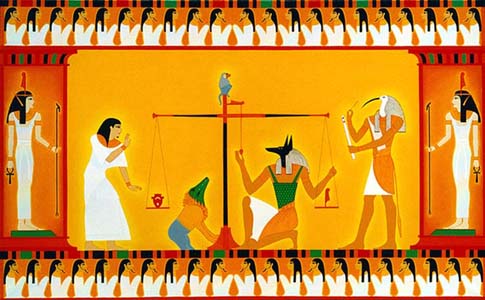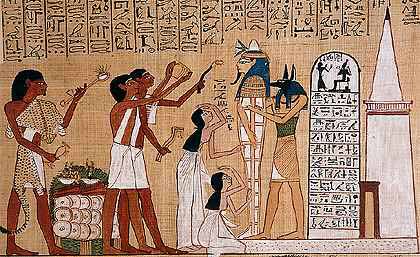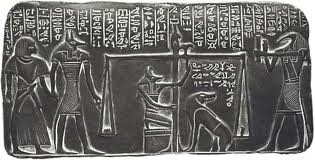Egyptian religion was highly ritualistic, involving daily ceremonial activities (complex rituals celebrating the Divine) and regular, popular festivals (Egyptian Ceremonies), or public celebrations, with a pre-determined periodicity (daily, quarterly, monthly, yearly, etc.) cast in a religious calendar, based on stellar (stars), astral (planets), seasonal (Sun and Sothic cycle), monthly (the 4 quarter of the Moon) and daily phenomena (decals and Earth-rotation). These rituals were believed to be essential to both the living and the dead.

Egyptian Death Rituals
They also had death Rituals and Ceremonies. The Death Rituals practised by the Ancient Egyptians included embalming and mummification. The mummies of dead Egyptians were placed in anthropoid (man-shaped) coffins which were decorated with a likeness of the deceased.
The coffins were then placed in a protective stone sarcophagus. These are well-known Death Rituals but there were other extremely important death rituals which were practised including the ‘Opening of the Mouth ‘ ritual.
About Egyptian Ceremonies

Royal marriages were most likely celebrated with a great deal of pompous attention and Egyptian Ceremonies. Kings often married several women, foreign princesses and the like, for political reasons. It was also a reason to give lavish banquets and offerings to the gods, and also an exchange of gifts to the bride´s father, who might be an important possible foreign ally in coming days.
Festival calendars tend to list the details of these celebrations, such as their date, the deity honoured and perhaps a sentence concerning the involvement of a specific priest in a rather terse fashion. Fortunately, the walls of the Greco-Roman temples at Dendera, Edfu, Esna, Kom Ombo and Philae provide additional information not included in the festival calendars, which allow us to reconstruct the events in greater detail.
Furthermore, papyri scrolls and fragmentary biographical texts reveal intriguing and often hidden details such as processions, morning, noon and evening ablutions of the deity; chants; and speeches.
Feast of Wagy

Feast of Wagy celebrated seventeen days after New Year’s Day was connected with the mortuary rituals of ancient Egypt and was celebrated by private individuals outside of official religious circles as well as within the precincts of the major temples in Egypt.
In Festival of Opet, Theban citizens and their guests from afar celebrated the fruitful link between their pharaoh and the almighty god, Amun, who in the New Kingdom became a state god. During the celebration, it was thought that the might and power of Amun were ritually bequeathed to his living son, the king.